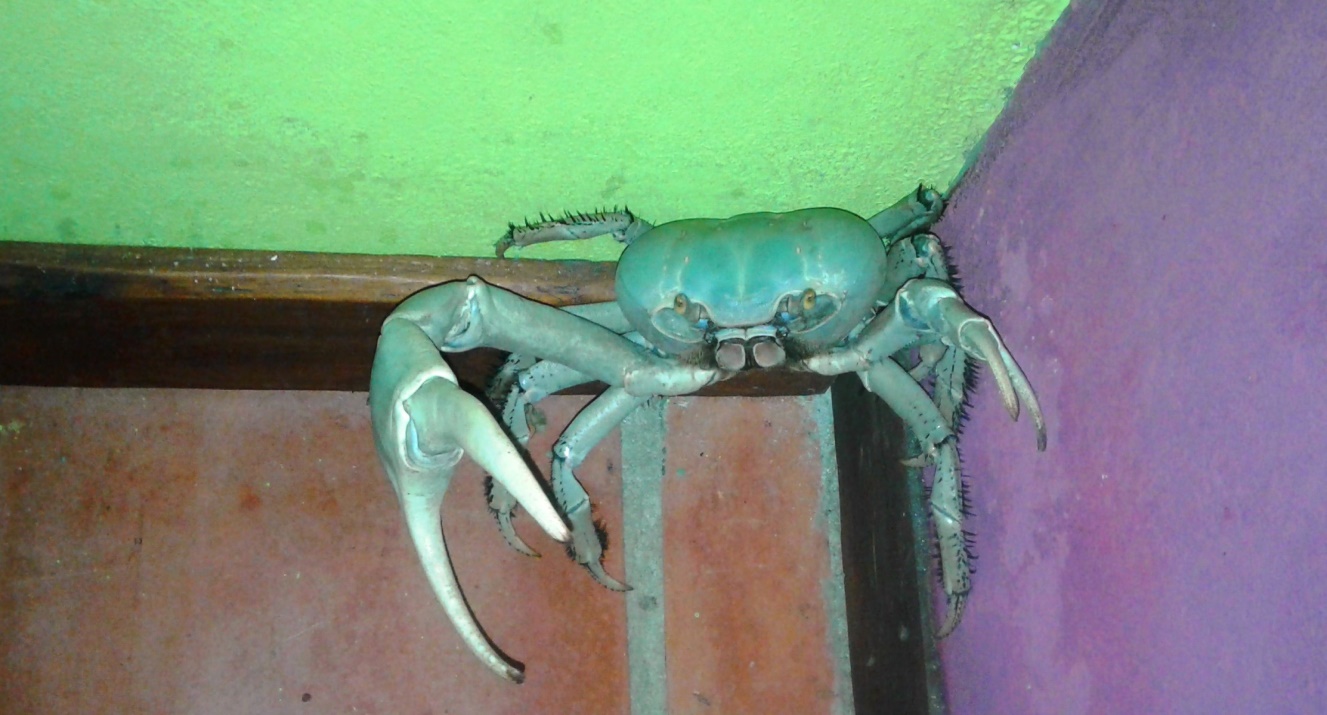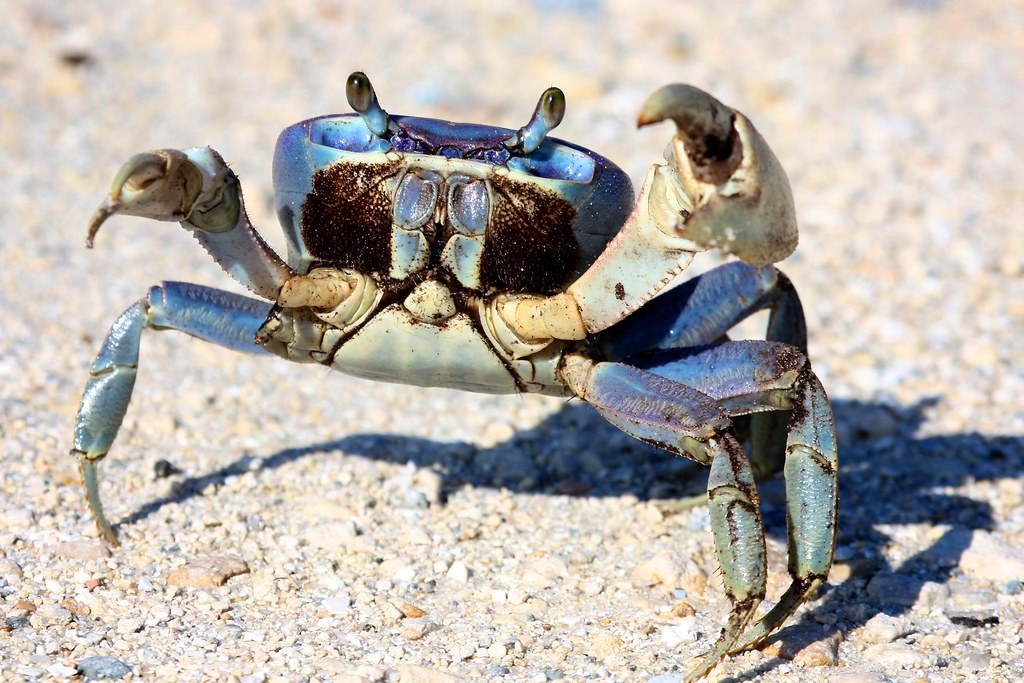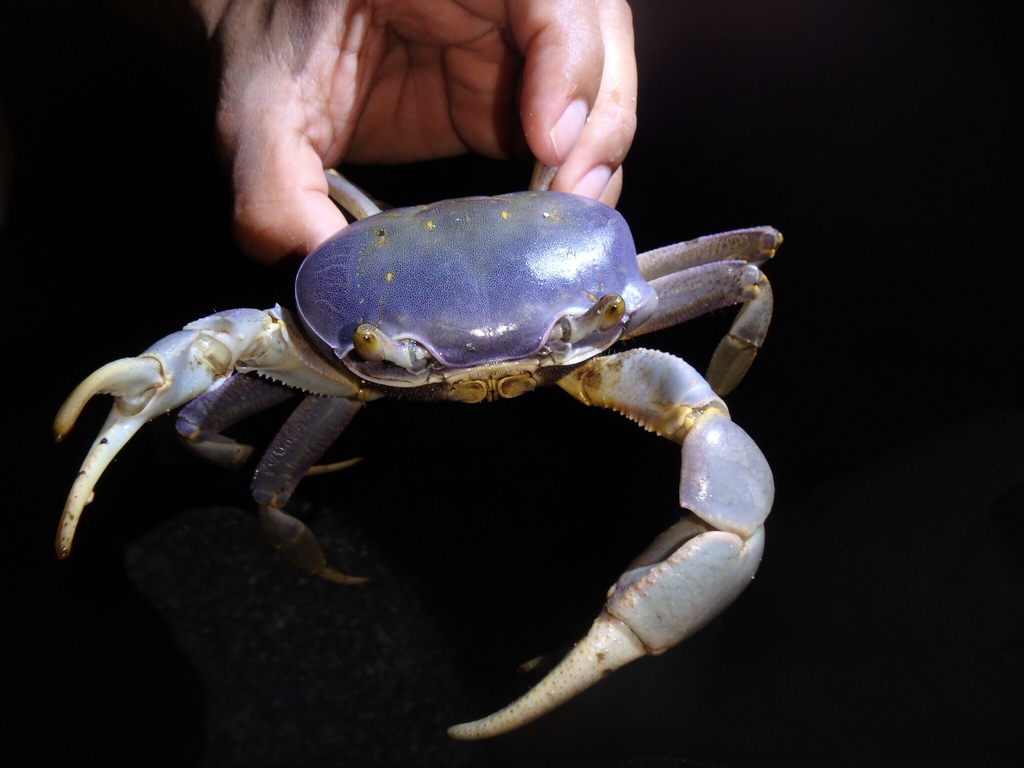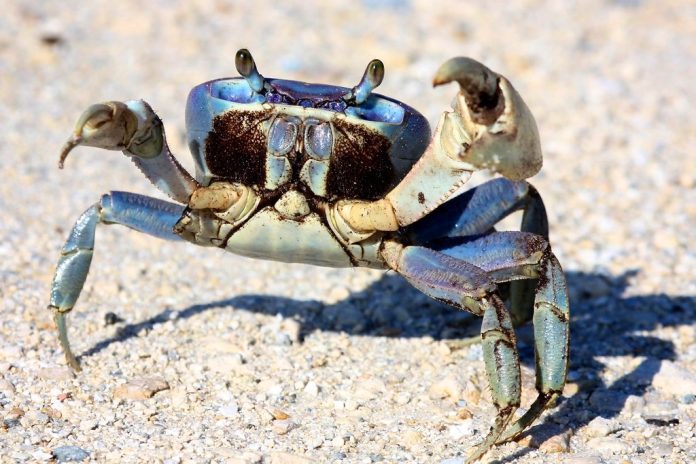Booking a magical glimpse inside Etnia Nativa
Article by Etnia Nativa call us 592 2702 and book your experience!
Etnia Nativa is a unique native gem where education is combined with entertainment, sharing interactive experiences with an exclusive few. An unparalleled private opportunity to tour a beautiful property made with reused materials collected by the owner, an unrivaled columnist and island cultural expert. Book your visit and dive deep into the navel of Aruba. From that educational perspective, in this new episode we share a little about Aruba`s blue crab, Cardisoma guanhumi, especially found in mangrove’ areas, and how, after sundown, they are very active.

The blue crab is a semi-terrestrial species that lives in dried-up sea in lets and hypersaline tidal flats called “apicuns,” which are less flooded mangrove areas scarcely covered by vegetation. Although the habitat of C. guanhumi is interdependent on the mangrove ecosystem, they have adapted to live on mud flats and in coconut plantations that had risen during colonial times and were approximately close to the sea! The local population of the Blue Crab has been diminishing and has been highly affected by overhunting, uncontrolled demographic growth, and the loss and contamination of their traditional habitat. We need to pay attention in order to maintain the population of C. guanhumi at sizes that guarantee its conservation. Be aware of special blue crab road crossing areas on the highway, like the one near Pos Chiquito and Santo Largo salt ponds. A bright yellow “Land Crab Crossing” road sign on the road is to remind drivers to watch out and pay attention during seasonal crossings.
Many Caribbean native populations know the crab C. guanhumi as *Sirik (a word of Arawak origin), and it is a very important part of their crustacean diet. Some Arubans love to eat the blue crab, but others kept them in cages for a few weeks to feed them with bread to clean up their system since they claimed they were *shiwati, or poisonous, if you did not follow this cleaning process. A time ago, we organized crab-hunting nights during the full moon. You must have the skills to grab one since they could bite or grip your fingers hard with their pincers, which was very painful. You had to hold its body with your foot without breaking or damaging its carapace. Then hold the two pincer claws tight in order to put them in a potato-like netted bag. They were chopped in half, cleaned up with a scrubbing brush, and boiled in a big ceramic pot filled with basil leaves. But those were different times, and there were a large number of blue crabs. Today, we must take care of them!

*Sirik was a name that also corresponds to the Pleiades constellation since its morning appearance coincides with the crustacean spawning season, the rainy season, and the beginning of the Caribbean year. Caribbean natives also associated the Pleiades with the frog (explained in our episode 184), a symbol of rain and fertility.
The reproductive cycle of the C. guanhumi “blue crab” is closely linked to seasonal weather patterns and the lunar phase. The rains initiate their migrations. When this occurs, blue crabs begin to gain weight as more food is consumed and gathered for the first few weeks of the migratory period. Males mate with mature females during this time. Fertilization is internal, and throughout July and August, most females carry the eggs externally. After approximately 2 weeks, the eggs will hatch and must be released into saltwater for the larvae to survive. The typical development period from hatching to the first crab stage takes approximately 42 days under laboratory conditions; however, this time may be much shorter in the wild.

The diet of this crab consists of decomposed trees, insects, and the remains of dead animals. It is a slow-growing species compared to most other crabs. The blue crab generally seals the exit to its burrow using mud, 6–10 days before it molts, to protect itself from predators since it is when they are most vulnerable because their shell has not yet hardened and their color varies from dark blue to brown or pale grey. They may grow to 15 centimeters (6 in) in carapace width and weigh over 500 grams.
If you liked our native stories and are interested in learning the true identity of Aruba, a visit to Etnia Nativa would be a fantastic choice. It has been a trend setter since 1994, as a co-founder of projects such as Arikok National Park, the Archaeological Museum, and the Artisan Foundation, among others. Every week, this newspaper continues to share its valuable knowledge. Don’t miss the opportunity to feel the island’s spirit through learning real stories that are not just remembered; they resonate, they’re felt, and they stir souls. Book your visit: WhatsApp +297 592 2702 etnianativa03@gmail.com




















